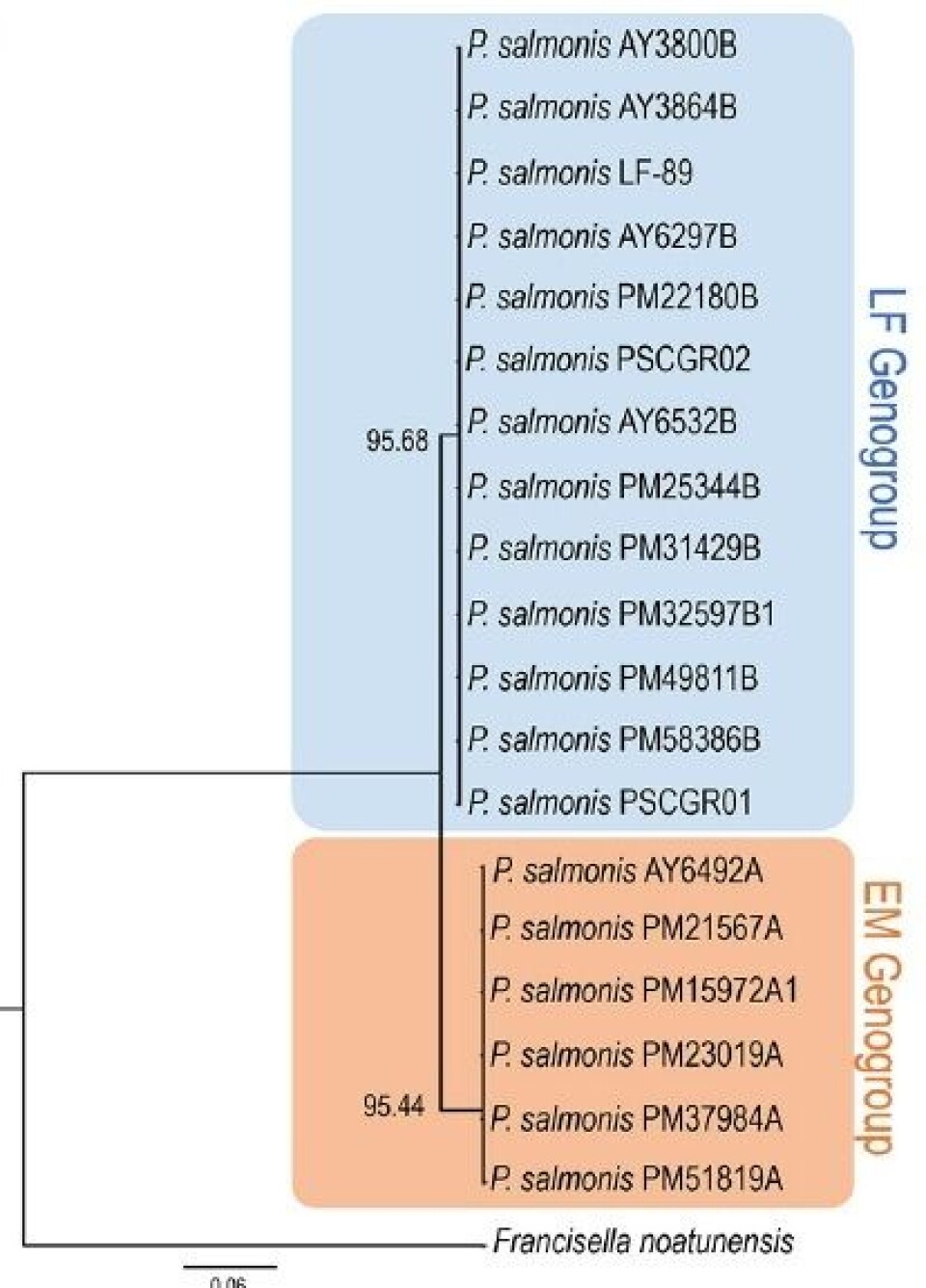
Study reveals new information about SRS bacteria
Twelve researchers belonging to nine scientific institutions in South America have discovered information that will help the future control of the bacteria Piscirickettsiosis salmonis, the cause of Salmon Rickettsial Syndrome (SRS).
Their study described and analysed the pan-genome of P. salmonis, finding relevant information about the genetic classification and virulence factors, among other things.
Since the first description of the pathology and isolation of the etiological agent carried out in Chile in 1989, the disease has been reported in many countries, including Ireland, Norway, Canada, the United States and Scotland, although Chile remains worst affected.
In spite of the current strategies for its control, such as vaccination, antibiotic treatment and other biotechnological tools, piscirickettsiosis continues to present outbreaks associated with mortalities; leaving in evidence the high pathogenicity of the bacterium and its resistance to antibiotics.

In Chile, two genogroups of P. salmonis associated with strains LF-89 and EM-90 have been identified. Despite efforts to genetically characterise the bacterium, functional information is lacking to evaluate the genomic divergences in the virulence and metabolism factors between the genogroups.
Unique to certain strains
The core-genome is defined as the set of genes shared by all strains of the same bacterial species. In turn, the pan-genome is the set of all the genes of a bacterial species, that is, the set of shared genes and genes unique to certain strains.
The study of the pan-genome allows scientists to elucidate key information of the pathogen contained in its genes such as intraspecies diversity, adaptations of the bacterium and differentiations in mechanisms of pathogenicity.
To address this information, scientists from various faculties and institutes of the Universidad Austral de Chile, Universidad Mayor, Andrés Bello University, Fondap Center, Beagle Bioinformatics, ADL Diagnostic Laboratory, and Applied Bioinformatics Laboratory (Brazil), conducted an in-silico study with the genomes of 19 strains of P. salmonis isolated from different geographical areas of Chile.
Two genogroups
The phylogenetic tree constructed by the researchers with seven conserved genes corroborated the existence of two different genogroups composed of six strains in the group "EM" or "A" and 13 in the group "LF" or "B".
Regarding this, the authors reported that: "Each genogroup presented differences in DNA rearrangements, with more divergences observed in the isolates of the EM genogroup. The divergences of this group included variations in the ribosomal operons, suggesting a potential evolution in two new subgroups."
The confirmation of these two genogroups is also relevant for the development of vaccines, where it will be important to show if there are immunogenic differences between the genogroups, given that the current vaccines are mainly based on the LF variants.
Virulence factors
On the other hand, the analysis of the pan-genome of P. salmonis was determined in an "open" state, that is, it has the capacity to acquire exogenous DNA, which could explain the observed genomic variability.
The authors also found common virulence factors for the two groups and divided them into six categories: (i) endotoxins; (ii) iron absorption, (iii) capsule and other surface components, (iv) adhesion, colonization and invasion factors, (v) enzymes and (vi) stress response category.
Interestingly, some virulence factors were specific to a genogroup. For example, isolates of the LF genogroup have a "patatin" type protein, which has phospholipase activity, associated with bacterial entry, phagosomal escape and cell-to-cell propagation.
In conclusion, the scientists stated that "the data obtained serve as a starting point to develop innovative methodologies that help the discrimination between strains and genogroups of P. salmonis , which will be useful to diagnose the disease and to select possible candidate genes that could be applied in the control of piscirickettsiosis".
Review the study here.




















































